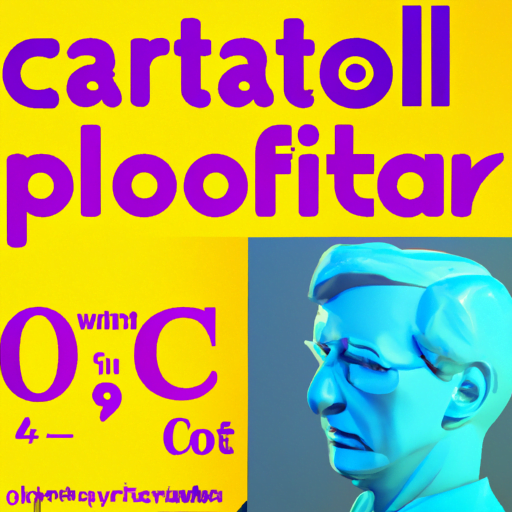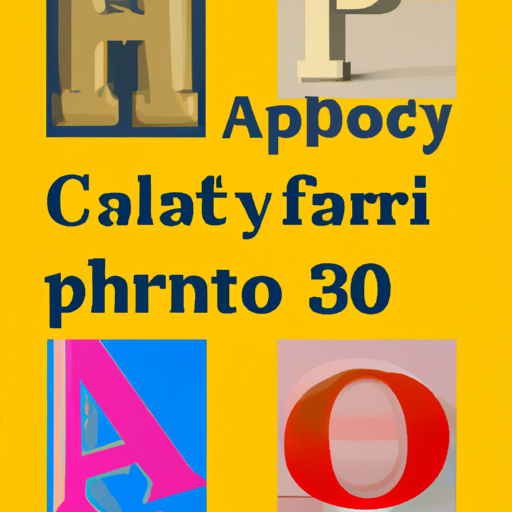
-
Table of Contents
- The Craft of Creating Custom Fonts and Typefaces
- The Importance of Custom Fonts and Typefaces
- The Process of Creating Custom Fonts and Typefaces
- 1. Research and Conceptualization
- 2. Letterform Design
- 3. Digitalization
- 4. Kerning and Spacing
- 5. Testing and Refinement
- 6. Production and Distribution
- Case Studies: Custom Fonts in Action
- 1. Airbnb’s Cereal Typeface
- 2. The New York Times’ Cheltenham Typeface
- 3. Coca-Cola’s Spencerian Script
- The Impact of Custom Fonts and Typefaces
- 1. Branding and Identity
- 2. User Experience and Readability
- 3. Advertising and Marketing
- 4. Editorial and Publishing
The Craft of Creating Custom Fonts and Typefaces

Fonts and typefaces play a crucial role in design, branding, and communication. They have the power to evoke emotions, convey messages, and create a unique identity. While there are countless fonts available today, custom fonts and typefaces offer a way to stand out from the crowd and create a truly distinctive visual language. In this article, we will explore the craft of creating custom fonts and typefaces, diving into the process, techniques, and the impact they can have on various industries.
The Importance of Custom Fonts and Typefaces
Custom fonts and typefaces provide designers with the opportunity to create a unique visual identity for a brand or project. They allow for greater control over the overall look and feel of the design, ensuring that it aligns perfectly with the intended message and target audience. Here are some key reasons why custom fonts and typefaces are important:
- Brand Differentiation: In a crowded marketplace, having a custom font can help a brand stand out and differentiate itself from competitors. It allows for a distinct visual identity that is instantly recognizable.
- Consistency: Custom fonts ensure consistency across various touchpoints, such as websites, packaging, and marketing materials. This consistency strengthens brand recognition and builds trust with the audience.
- Enhanced Readability: Custom fonts can be tailored to improve readability, especially for specific use cases such as long-form content or small screens. Designers can optimize letterforms, spacing, and proportions to enhance legibility.
- Emotional Connection: Fonts have the power to evoke emotions and create a specific atmosphere. Custom fonts can be designed to align with the brand’s personality and evoke the desired emotional response from the audience.
The Process of Creating Custom Fonts and Typefaces
Creating custom fonts and typefaces is a meticulous process that requires a deep understanding of typography, design principles, and technical considerations. Here is a step-by-step overview of the process:
1. Research and Conceptualization
The first step in creating a custom font is research. Designers need to understand the brand, its target audience, and the intended use of the font. This research helps in defining the overall style, tone, and personality of the font. Once the research is complete, designers move on to conceptualization, sketching initial ideas and exploring different letterforms.
2. Letterform Design
After the conceptualization phase, designers start refining the letterforms. They focus on creating a consistent visual language across all characters, ensuring that each letterform complements the others. This stage involves experimenting with different shapes, strokes, and proportions to achieve the desired aesthetic and readability.
3. Digitalization
Once the letterforms are finalized, they are digitized using specialized software. Designers use vector-based tools to create scalable and editable outlines of each character. This digitalization process allows for precise control over the details and ensures that the font can be used across different platforms and sizes.
4. Kerning and Spacing
Kerning and spacing are crucial aspects of font design. Designers meticulously adjust the spacing between characters to ensure optimal readability and visual harmony. Kerning involves adjusting the space between specific pairs of letters to create a balanced and visually pleasing result.
5. Testing and Refinement
Once the font is digitized and kerned, it goes through extensive testing. Designers test the font in various contexts, such as different sizes, weights, and applications, to ensure its legibility and usability. Feedback from testers and users is collected and used to refine the font further.
6. Production and Distribution
After the testing and refinement phase, the font is ready for production. It is packaged and distributed in various formats, such as TrueType, OpenType, or web fonts, depending on the intended use. Designers may also create accompanying documentation and guidelines to assist users in utilizing the font effectively.
Case Studies: Custom Fonts in Action
Custom fonts have been successfully used by various brands and organizations to create a unique visual identity and enhance their communication. Let’s explore a few notable case studies:
1. Airbnb’s Cereal Typeface
Airbnb, a global hospitality brand, created its custom typeface called Cereal to reflect its brand values and enhance its user experience. The font is clean, modern, and versatile, allowing it to be used across different platforms and languages. Cereal has become an integral part of Airbnb’s visual identity, reinforcing its commitment to design excellence.
2. The New York Times’ Cheltenham Typeface
The New York Times, a renowned newspaper, commissioned a custom typeface called Cheltenham to establish a distinctive visual identity. Cheltenham is a serif font that exudes elegance and authority, perfectly complementing the newspaper’s editorial content. The font has become synonymous with The New York Times and is instantly recognizable.
3. Coca-Cola’s Spencerian Script
Coca-Cola, a global beverage brand, has been using its iconic Spencerian Script font since the late 19th century. The custom font, with its flowing curves and unique letterforms, has become synonymous with the brand’s heritage and values. It evokes a sense of nostalgia and authenticity, reinforcing Coca-Cola’s timeless appeal.
The Impact of Custom Fonts and Typefaces
Custom fonts and typefaces have a significant impact on various industries and sectors. Here are some key areas where custom fonts make a difference:
1. Branding and Identity
Custom fonts play a crucial role in establishing a brand’s visual identity. They help create a unique and recognizable brand language that resonates with the target audience. Custom fonts ensure consistency across different touchpoints, reinforcing brand recognition and recall.
2. User Experience and Readability
Custom fonts can greatly enhance the user experience by improving readability and legibility. Designers can optimize letterforms, spacing, and proportions to ensure that the content is easily readable across different devices and screen sizes. This improves user engagement and comprehension.
3. Advertising and Marketing
In advertising and marketing, custom fonts can be used to create a distinct visual identity that captures attention and communicates the brand’s message effectively. Fonts have the power to evoke emotions and create a specific atmosphere, making them a valuable tool in advertising campaigns.
4. Editorial and Publishing
Custom fonts are widely used in editorial and publishing industries to establish a unique typographic voice
